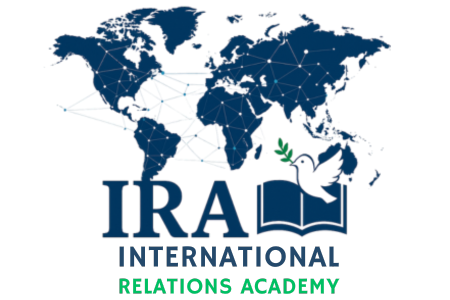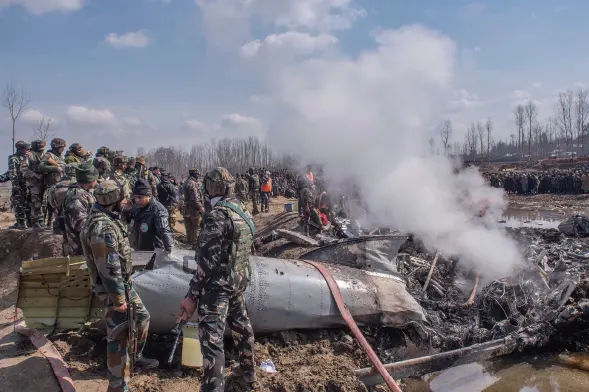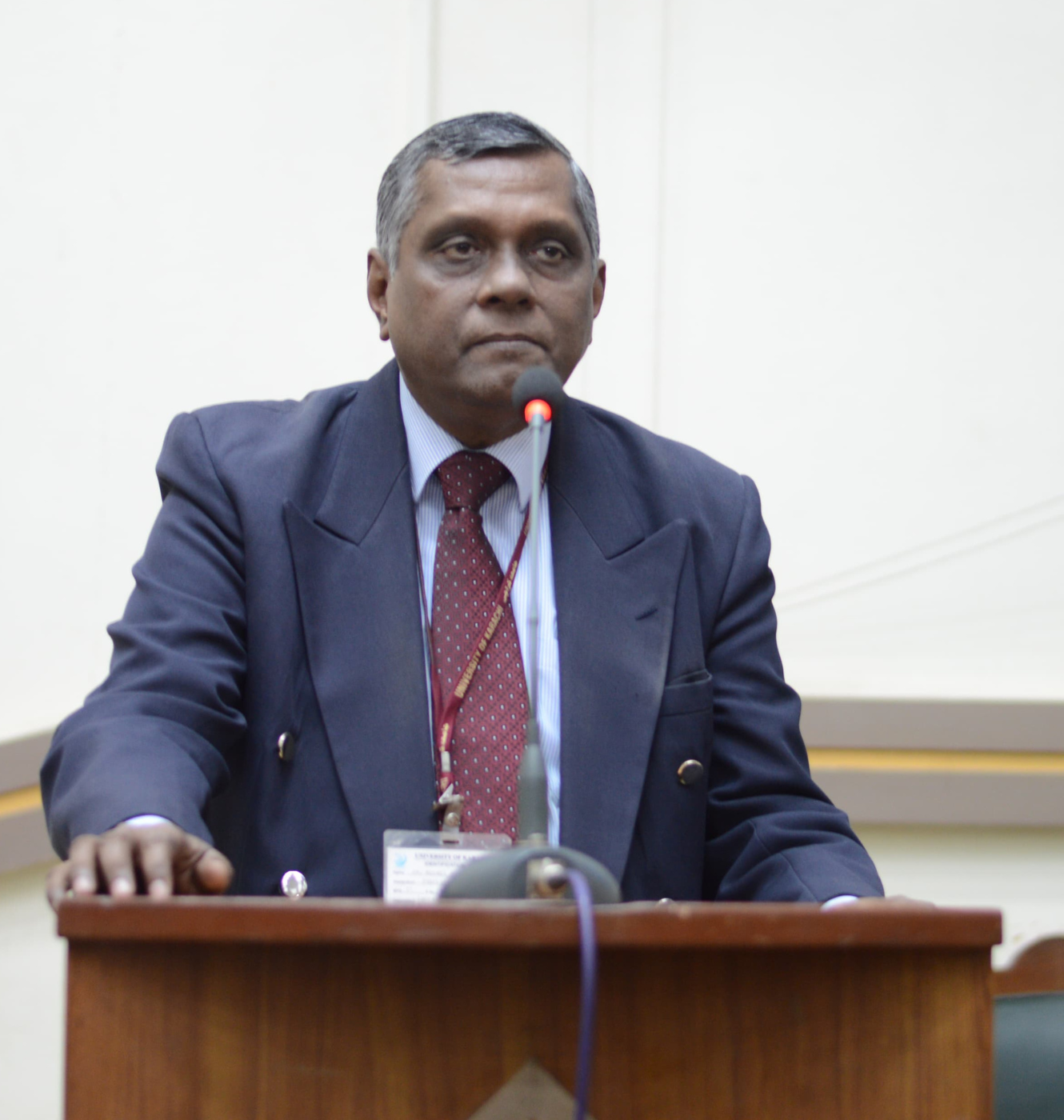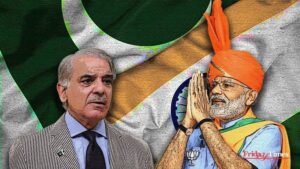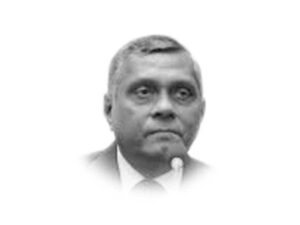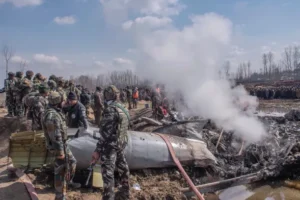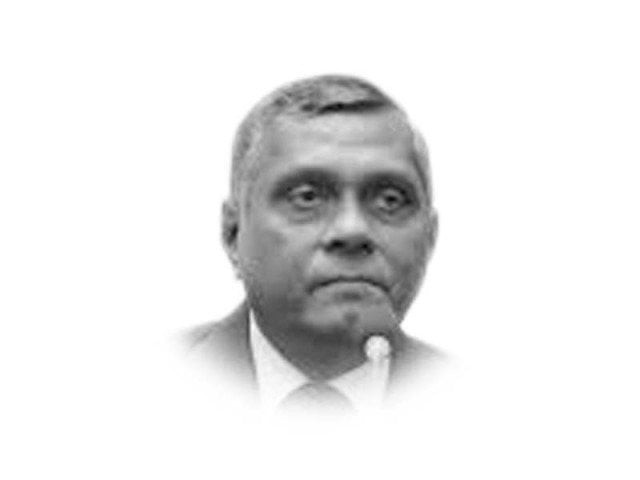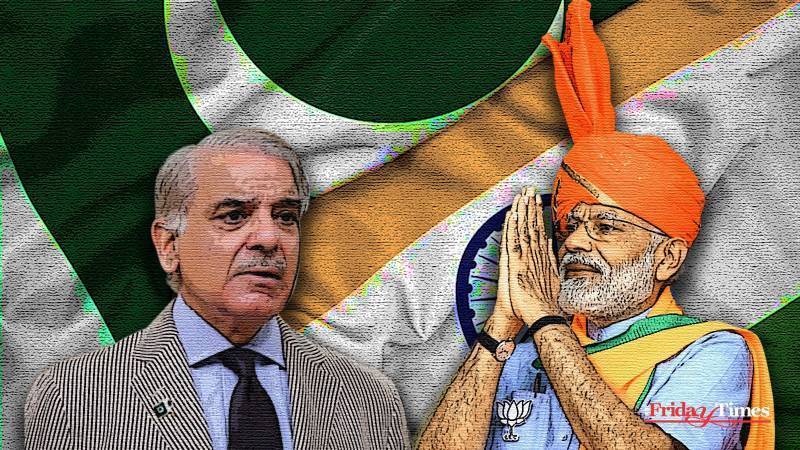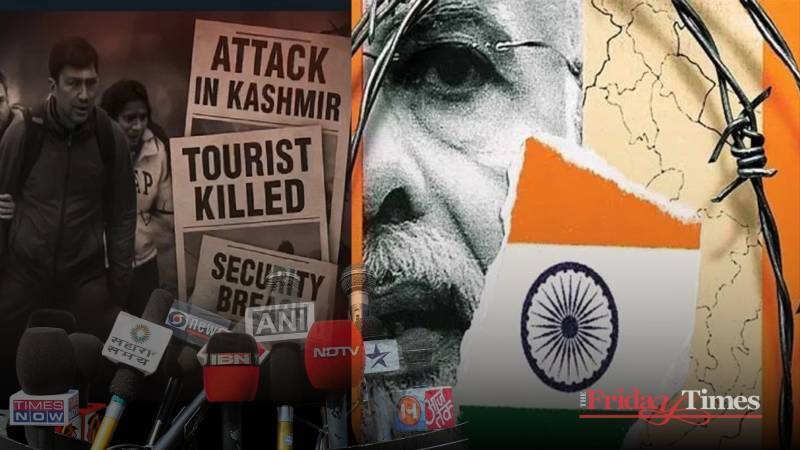Unless a plausible solution is sought to manage India-Pakistan disputes, the two nuclear-armed neighbors will again be eyeball to eyeball.
Never in recent human history has a reference been given to a four-day armed conflict between India and Pakistan as a potential outbreak of a nuclear showdown in South Asia. India-Pakistan standoff following the Pahalgam episode of April 22, in which around 26 tourists were killed in a terrorist attack, provoking the Narendra Modi government to launch missile and drone attacks on Pakistan, is still continuing.
“Operation Sandoor’ launched by New Delhi following the Pahalgam attack has not been abandoned, and there is no visible indication reflecting a breakthrough in the India-Pakistan standoff.
Will the prevalent India-Pakistan impasse be termed as a calm before the storm? Will China again come to Pakistan’s assistance in the wake of another round of hostilities between New Delhi and Islamabad? What will be the American position if the prevailing lull leads to a fresh phase of India-Pakistan armed conflict? It is another debate why India rejected President Donald Trump’s claim that his intervention led to the ceasefire. The Indian Prime Minister, Narendra Modi, after miscalculating ‘Operation Sandoor,’ is like an ‘injured lion’ who will waste no opportunity to avenge the perceived Indian humiliation at the hands of Pakistan during the May 7-10 armed conflict. The loss of 500 million dollars of war planes, including three Rafale jets, at the hands of the Pakistan Air Force is merely one component of his anger. Furthermore, the manner in which India faced embarrassment at the international level because the world refused to believe New Delhi’s narrative that it was Pakistan that was involved in the Pahalgam attack is a major ground reality. Selecting Pakistan as Vice-Chairman of the UN anti-terrorist panel is a big slap on India’s face, which means that the Modi government, despite its claim that it has isolated Islamabad at the international level, has lost both respect and pride.
Pakistan’s victory in the May 7-10 armed conflict with India generated a euphoric condition which reinforced Islamabad’s narrative that, despite tall claims to give Islamabad a bloody nose, New Delhi miserably failed to prove its military power, and internationally, the world also refused to condemn Pakistan. Yet, one needs to examine the narrative of top Indian leadership that in the May 7-10 encounter, it was not Pakistan that was at war, but China was entirely behind Islamabad. A strange situation developed after May 10, when the United States claimed to have arranged a ceasefire between India and Pakistan, but primarily, it was Chinese military support that exposed the fragility of the Indian Air Force and led to its near collapse. Indeed, a brainstorming session must have taken place in strategic and political circles of Indian power corridors to analyze what went wrong and why the Pakistan Air Force performed much better.
As the dust has almost settled, and both Pakistan and India have also completed their diplomatic offensive to gain international support, it is time to analyze with critical thinking: the fragile peace is a temporary phenomenon because soon, the two neighbors may face another round of armed conflict with dangerous ramifications. One can come up with three main arguments to prove that unless a plausible solution is sought to manage India-Pakistan disputes, the two nuclear-armed neighbors will again be eyeball to eyeball.
First, power asymmetry between India and Pakistan, particularly in the economic and military realms, is a major cause of New Delhi’s strategic planning to avenge its humiliation in the May 7-10 military encounter with Pakistan. The Indian Defense Minister Rajnath Singh recently threatened that in the next round of hostility the Indian Navy will teach Pakistan a lesson and cripple its supply chain along the port of Karachi and the rest of the country. One can question Rajnath’s assertion because of the demoralized shape of the Indian military and its inability to challenge Pakistan with its perceived military might again. What matters is the role of the United States, China, and other global powers in another round of India-Pakistan hostilities. Will China again come to the assistance of Pakistan if it faces an Indian onslaught, or will Beijing stay neutral because it is its age-old policy not to get involved in any armed conflict? During the Kargil war in the summer of 1999, China made it clear to Pakistan that it could not support its stance against India. For China, instead of plunging itself into an armed conflict with India, Pakistan needs to handle things diplomatically. Will India allow any space to Pakistan in getting the same support which it got from China and elsewhere, or will it use any future so-called terrorist attack in India or its occupied Jammu & Kashmir to mitigate Islamabad’s ability to get international support?
From any standpoint, it was calm before the storm because of the sustained standoff between India and Pakistan. U.S President Donald Trump may say that he will try to start the process of dialogue between India and Pakistan and play a role in the resolution of the Kashmir dispute. Still, his claim may not have any logical basis because India will never agree to an international mediation. Suspending the Indus Waters Treaty (IWT) with Pakistan has not gone well with the global community, but New Delhi is adamant and argues that restoration of that treaty would require a policy change on the part of Pakistan on the issue of terrorism. It is a prevailing standoff between India and Pakistan, which has bewildered both China and the United States, as both powers, despite their conflicting interests, cannot prevent another round of hostilities in South Asia.
Instead of harping on its military edge over India in recent armed conflict, Pakistan must brainstorm about dealing with any future hostilities with its eastern neighbor.
Second, Pakistan must improve its economy and governance and mitigate political schism. Is Pakistan economically better off than India? Certainly not. India is the world’s fifth-largest economy and will soon overtake Germany and Japan to become the world’s third-largest economy. Pakistan’s GDP, per capita income, economic growth rate, foreign exchange reserves, earnings from remittances, tourism, and exports of technology are far lower than India’s. It is time that those who matter in Pakistan must try to focus on dealing with their internal fault lines and mounting economic challenges before another round of hostility with India takes place.
Critics argue that, unlike India, which provided opposition parties a leading role in diplomatic missions abroad, Pakistan failed to follow an inclusive approach and give representation to opposition parties in foreign delegations because they were led by those who either supported the PML-N government or were part of the government. Such an exclusive nature of diplomatic engagement gave the wrong message to the international community. Even if Pakistan gained diplomatically following the May 7-10 armed conflict with India, the exclusive nature of diplomatic delegations sent abroad was counter-productive. The Pakistan delegation failed to meet any top American leadership, unlike the Indian delegation, which, under Shashi Tharoor, leader of the Opposition led by the Indian National Congress party, held meetings with the US Vice-President J.D. Vance and others. Merely by addressing some think tanks in Washington, DC, and meeting some members of the US Congress, the Pakistan delegation in the U.S failed to get an audience with any high-ranking American official. This means Pakistan lost a valuable opportunity to present its case before influential American circles.
Finally, instead of harping on its military edge over India in recent armed conflict, Pakistan must brainstorm about dealing with any future hostilities with its eastern neighbor. India is using time to overcome deficiencies that its air force experienced in the May 7-10 armed conflict with Pakistan. The Indian Prime Minister Narendra Modi’s recent visit to occupied Kashmir, where he inaugurated the world’s tallest railway bridge, called the Chenab Bridge, reflects Indian confidence that it has overcome its military setback with its western neighbor.
War is not a solution for India and Pakistan, and the two countries must learn lessons from the recent armed conflict and the threat of its escalation. It is necessary to mitigate the India-Pakistan standoff and take steps to normalize their relations by unleashing the dialogue process. Resuming composite dialogue, which has been suspended for more than a decade, is the need of the hour. In addition, establishing a viable and meaningful crisis management mechanism to deal with a dangerous crisis between India and Pakistan and revitalizing confidence-building measures at the military/non-military levels also needs to be seriously considered by the two sides.![]()
